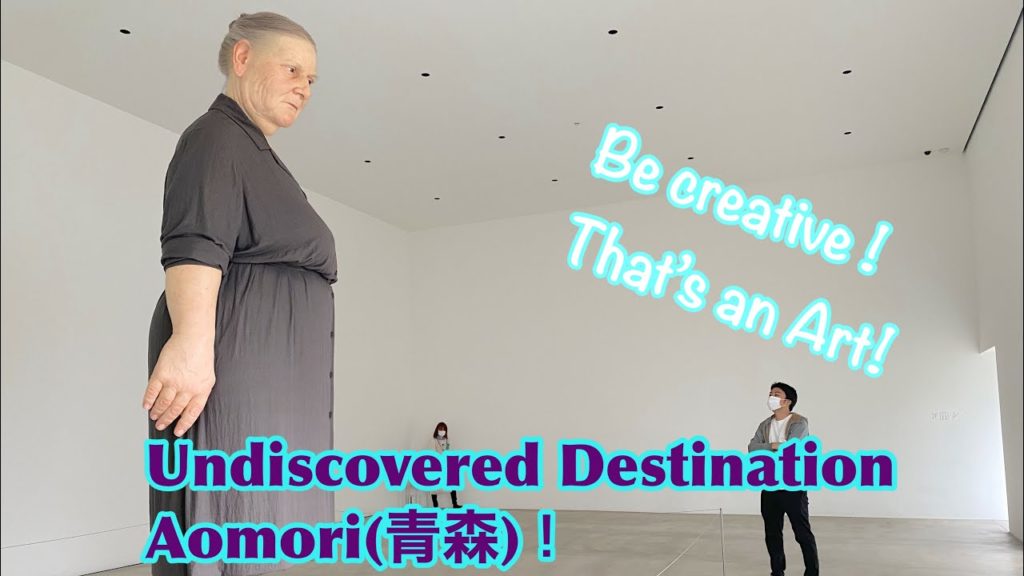Undiscovered Japan , Aomori!
Amazing Destination 🇯🇵
Let’s explore together!
Highlight:
1) Towada Art Centre
十和田市美術館
The Towada Art Center is the central facility for the Arts Towada Project, which was created to reinvigorate the local cityscape by introducing a variety of artworks into the environment as well as promoting projects and exchange with artists, citizens, and visitors to the city.
The Towada Art Center houses a permanent collection of 38 commissioned artworks, all made exclusively for the Towada Art Center by 33 world-renowned artists from Japan and abroad, including Yoko Ono, Yayoi Kusama, Choi Jeong Hwa, and Ron Muek.
2) Sannai Maruyama Site
三内丸山遺跡
The settlement site is characterized by the planned arrangement of pit dwellings, pillar-supported structures, pit graves aligned in rows, intentionally buried pots, artificial earthen mounds, storage pits, roads, and large-scale structures.
Massive amounts of pots and stone tools have been excavated, in addition to nuts (chestnuts, walnuts, etc.) and the bones of various fishes and animals, all of which are indicative of the diet and environment.
These finds demonstrate how people at the time ingeniously used natural resources throughout the year. Artifacts unearthed here also include wooden items, bone and antler objects, baskets, lacquerware and other organic materials, as well as numerous trade items, including jade, obsidian and asphalt from afar.
3) Aomori museum of Art
青森県美術館
The museum’s permanent collection includes three impossibly large paintings by Marc Chagall, that were originally backdrops for a ballet, which are shown in a room with 19 meter high ceilings that is sometimes used as a concert hall. Other work displayed in the permanent collection includes woodblock prints and paintings by Munakata Shiko, the pop art and almost cartoonish work of Nara Yoshitomo, as well as a huge 8.5 meter tall Aomori-Ken dog statue also by Nara.
4) Kogin zashi
こぎん刺し
A fine decorative stitching of various yarns on indigo fabric, Tsugaru koginzashi embroidery was devised by farmers living in Tsugaru, Aomori Prefecture. Its history goes back almost 300 years. Forced by law to live in poverty, farmers were not allowed to wear cotton, so they lived in clothes of coarse linen. But coarse linen provides little warmth, and it also frays when shouldering heavy baskets during farm work. Koginzashi embroidery was devised to increase thermal insulation and strengthen the cloth by weaving yarn throughout.
New 𝖽𝖾𝗌𝗍𝗂𝗇𝖺𝗍𝗂𝗈𝗇, 𝗐𝖾 𝖼𝖺𝗇 𝗌𝖾𝖾 𝖺𝗇𝖽 𝖾𝗑𝗉𝖾𝗋𝗂𝖾𝗇𝖼𝖾 𝗐𝗁𝖺𝗍 𝗐𝖾 𝖽𝗈𝗇’𝗍 𝗄𝗇𝗈𝗐 𝗒𝖾𝗍 𝖺𝗇𝖽 𝖼𝖺𝗇 𝖾𝗇𝗃𝗈𝗒 𝖺 𝖼𝗈𝗇𝗏𝖾𝗋𝗌𝖺𝗍𝗂𝗈𝗇 𝗐𝗂𝗍𝗁 𝗇𝖾𝗐 𝗉𝖾𝗈𝗉𝗅𝖾 😀
여행✈️새로운 체험,새로운 만남등 ,
새로운 인생을 느낄수있는 최고한 시간!
같이 찾으러 갑시다^^
——————————
Japan T𝗋𝖺𝖽𝗂𝗍𝗂𝗈𝗇𝖺𝗅 Inbound T𝗋𝖺𝗏𝖾𝗅 B𝗎𝗌𝗂𝗇𝖾𝗌𝗌
And Promotion C𝗈𝗇𝗌𝗎𝗅𝗍𝗂𝗇𝗀 C𝗈𝗆𝗉𝖺𝗇𝗒👨🏻🦰
K𝗒𝗎𝗌𝗁𝗎𝗀𝗈𝗄𝗈𝗋𝗈 𝖼𝗈., 𝗅𝗍𝖽.
(𝗐𝗐𝗐.𝗄𝗒𝗎𝗌𝗁𝗎𝗀𝗈𝗄𝗈𝗋𝗈.𝖼𝗈𝗆)
Any inquiry :
info@kyushugokoro.com


AloJapan.com